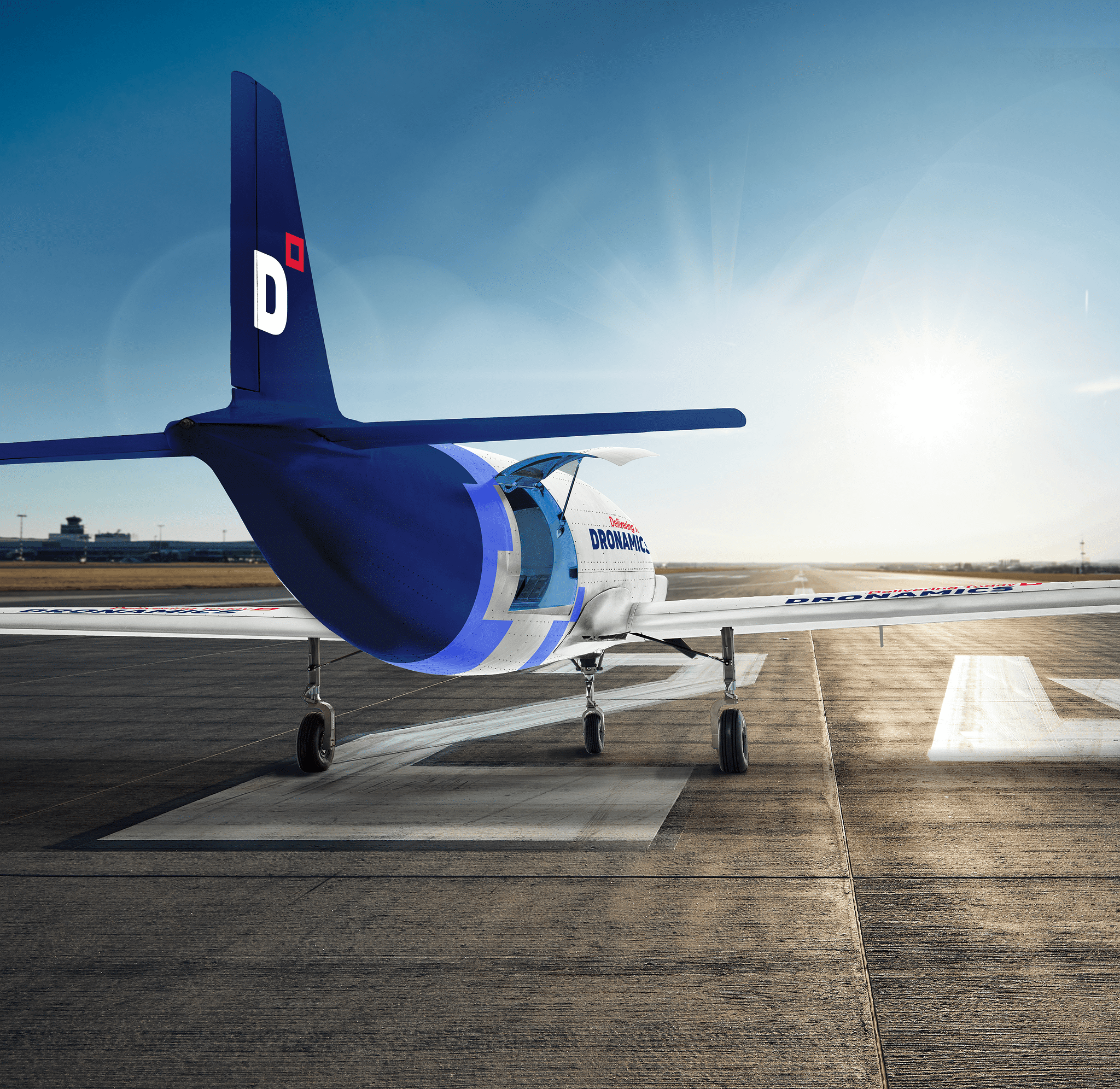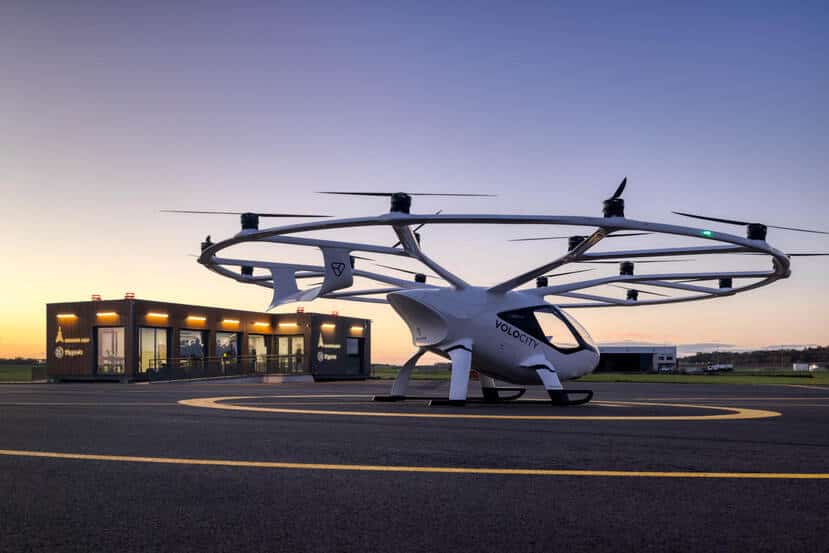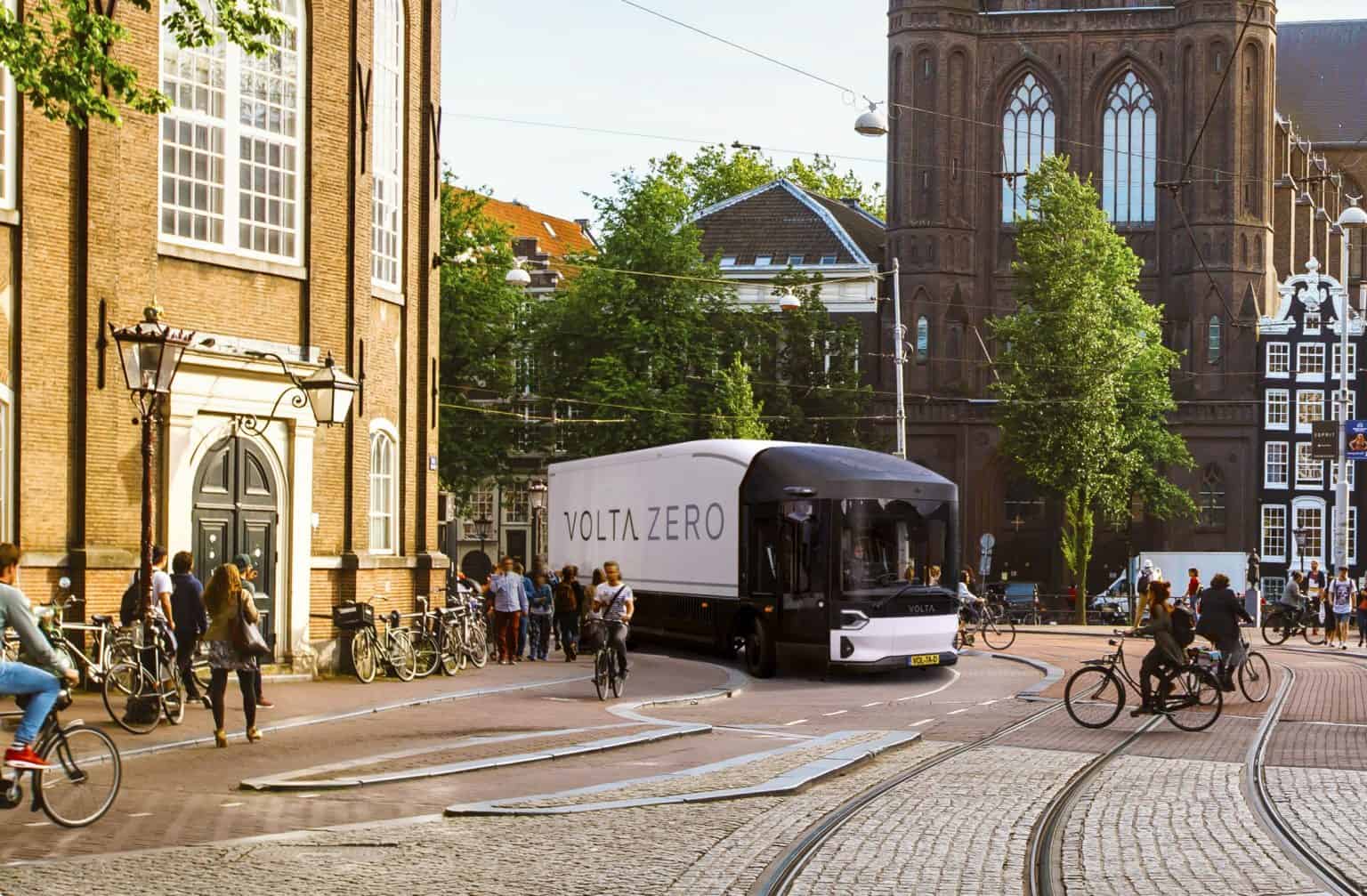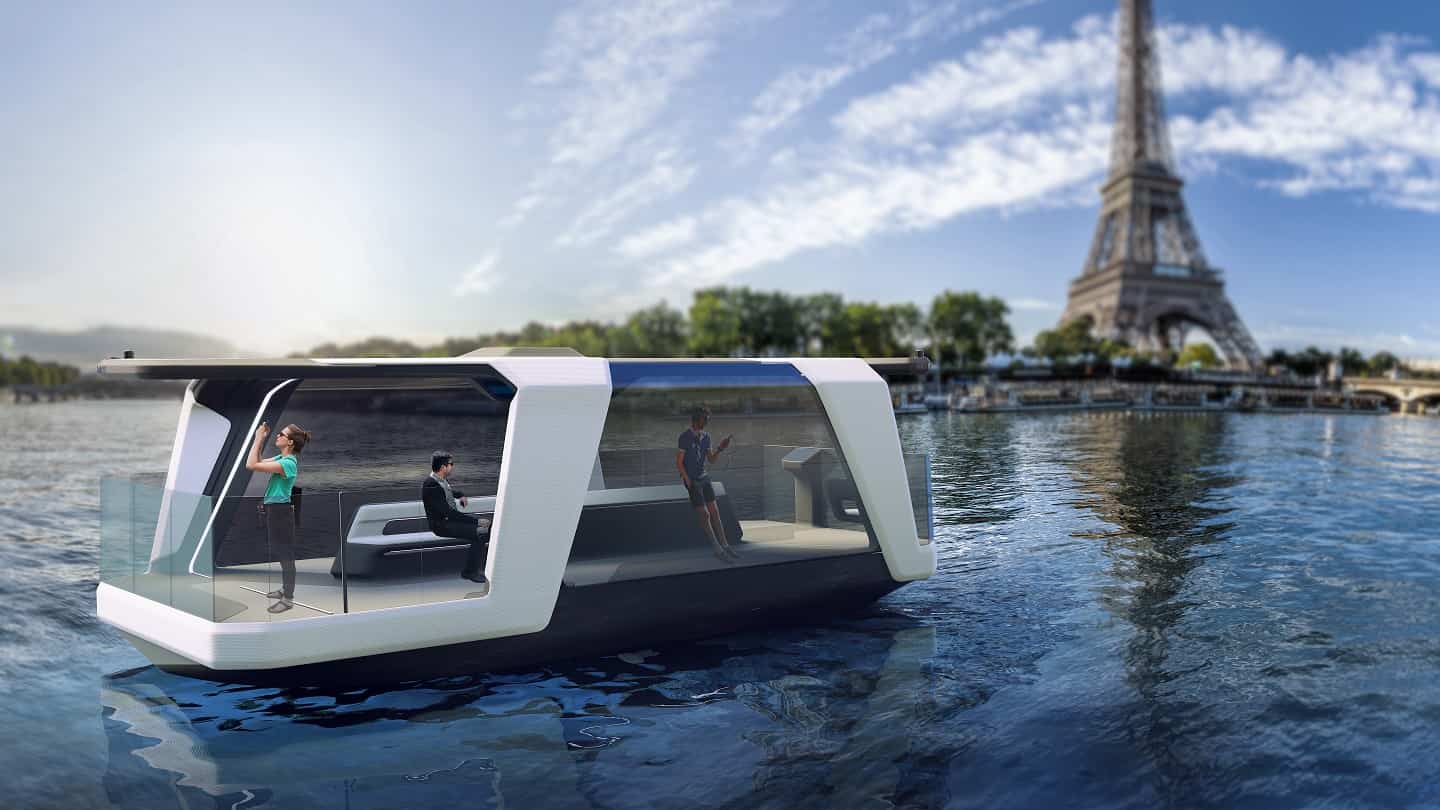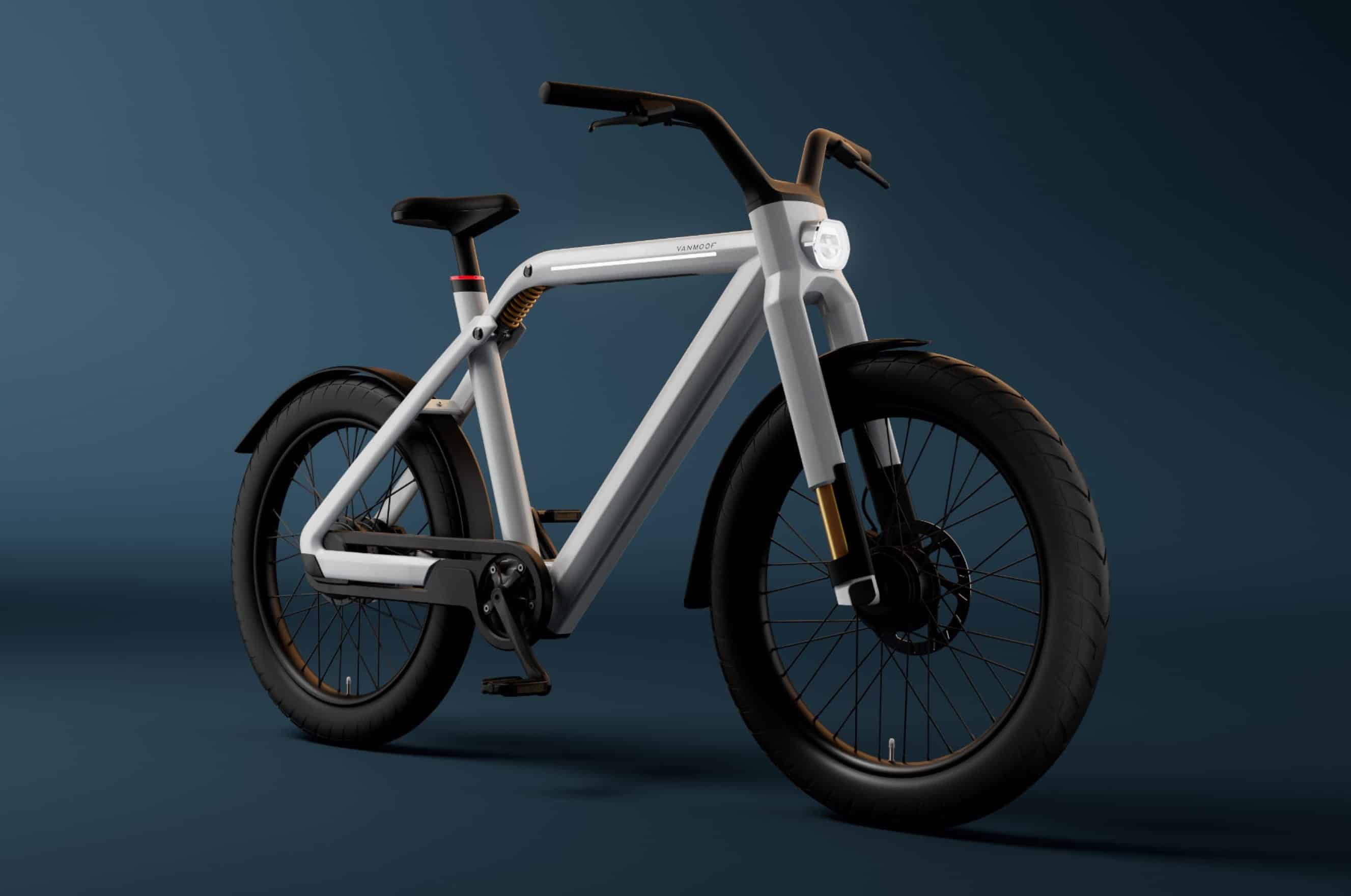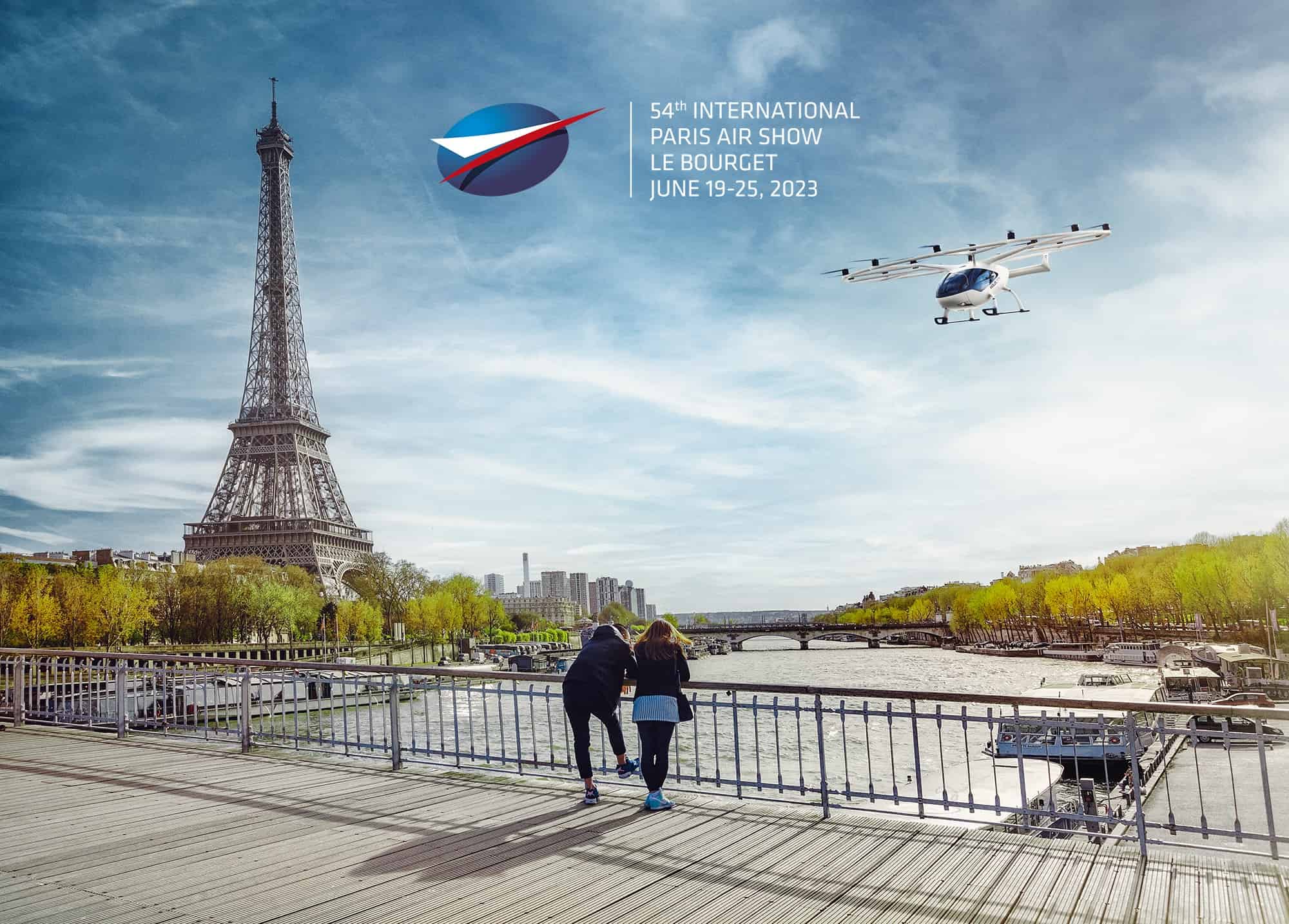
The dream of electric flying taxis for public use is edging closer to reality with German start-up Volocopter‘s showcase at the Paris airshow. The eVTOL (electric vertical take-off and landing) industry has faced financial setbacks due to the pandemic and increased interest rates, causing a dip in company valuations. However, it is showing signs of recovery.
The industry has seen entries from traditional plane manufacturers and new contenders. Different companies are pursuing varying designs and goals, with some focusing on quadcopter designs, while others aim for longer ranges with winged models. Despite facing certification hurdles, the industry holds the potential to revolutionise transportation, offering a cost-effective, greener alternative to conventional commuting.
- The eVTOL industry is seeing a resurgence with financial backing;
- Key players envision a future where electric flying vehicles become a safe, affordable, and sustainable mode of transportation;
- eVTOLs have the potential to address traffic congestion and disrupting traditional transportation methods, as seen in cities like São Paulo and plans for the Paris Olympic Games.
Steering the Course of eVTOLs
While the air taxi industry has been grappling with its fair share of challenges, a new wave of innovation and financial backing is encouraging. In a surprising move, carmaker Stellantis has invested in Archer Aviation, with plans to build the Midnight aircraft in a new US factory. This move, leveraging Stellantis’s mass production capabilities, could potentially lead to the highest number of crewed aircraft produced in a single factory worldwide. Simultaneously, traditional plane manufacturers like Airbus, Boeing, and Embraer are also joining the race, broadening the scope of competition.
The path to success in the eVTOL industry isn’t a one-size-fits-all approach. Instead, it’s marked by a diverse range of designs and aspirations. Some companies like Volocopter and EHang are centred on quadcopter designs, while others, including Archer, Eve Air Mobility, and Wisk, have models with wings designed for extensive ranges. Their collective aim is to make flying taxis not only cost-effective but also as user-friendly as conventional car taxis.

Charging Towards an Electric Future
According to McKinsey, experts and industry pioneers envisage a future where electric flying vehicles become a safe, affordable, and sustainable mode of transportation. Key players such as Joby Aviation, Lilium, and Volocopter are spearheading these developments. Joby Aviation foresees a future of popular aerial ridesharing, while Lilium believes electric passenger aircraft will be commonplace by 2030.
One of the main attractions of eVTOLs is their potential environmental benefits. With operations potentially carbon-neutral if charged with renewable power, research suggests that fully loaded eVTOLs can have lower emissions than both gas-powered and electric cars, making them a potentially sustainable mobility solution.
Scaling the Heights of Urban Mobility
Looking ahead, the adoption of eVTOLs could have a transformative impact on urban mobility. For instance, São Paulo, known for its notorious traffic congestion, is preparing for the introduction of electric air taxis. Aircraft leasing company Avolon has signed a deal to supply a Brazilian airline with eVTOLs, aiming to disrupt the helicopter market currently dominated by the super-rich and corporate executives.
Similarly, AutoFlight and Groupe ADP are planning to conduct experimental electric take-off and landing aircraft flights during the 2024 Paris Olympic and Paralympic Games. This is a clear indication of the escalating interest in and acceptance of eVTOL technology in mainstream society.
Challenges on the Horizon
Despite the optimistic outlook, the industry faces some significant hurdles. The certification process for these flying taxis is demanding, and not all companies are expected to successfully navigate it. Moreover, there are concerns about the potential contribution of eVTOLs to sprawl, inequities, and increased fossil fuel consumption.
City leaders, including those in São Paulo and Los Angeles, are preparing for this new mode of transportation, aiming to balance improved urban mobility with sustainability goals. Only time will tell how well these concerns are addressed and whether the dream of electric flying taxis will indeed take off as anticipated.
